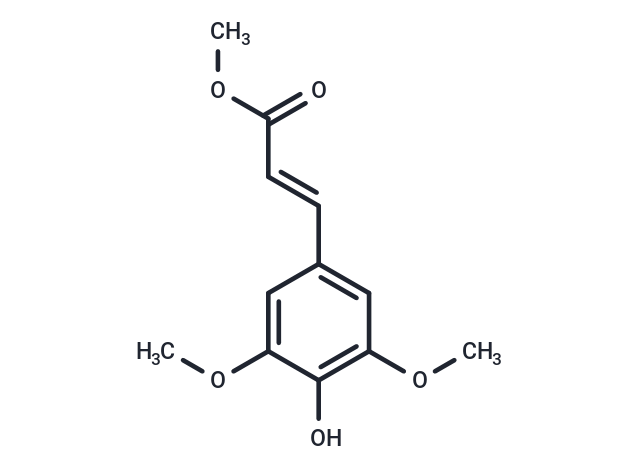Shopping Cart
Remove All Your shopping cart is currently empty
Your shopping cart is currently empty
Methyl sinapate can increase the frequency of cells with chromosome aberrations in the CHO K-1 cells treated with MMC, 4NQO or UV.

| Pack Size | Price | USA Warehouse | Global Warehouse | Quantity |
|---|---|---|---|---|
| 25 mg | $164 | Inquiry | Inquiry |
| Description | Methyl sinapate can increase the frequency of cells with chromosome aberrations in the CHO K-1 cells treated with MMC, 4NQO or UV. |
| In vitro | Sister-chromatid exchanges (SCEs) induced by mitomycin C (MMC), 4-nitroquinoline-1-oxide (4NQO) or UV-light in cultured Chinese hamster ovary cells (CHO K-1 cells) were enhanced by cinoxate (2-ethoxyethyl p-methoxycinnamate) or Methyl sinapate (methyl 3,5-dimethoxy 4-hydroxycinnamate). Both substances are cinnamate derivatives and cinoxate is commonly used as a cosmetic UV absorber. Methyl sinapate also increased the frequency of cells with chromosome aberrations in the CHO K-1 cells treated with MMC, 4NQO or UV. These increasing effects of Methyl sinapate were critical in the G1 phase of the cell cycle and the decline of the frequencies of UV-induced SCEs and chromosome aberrations during liquid holding was not seen in the presence of Methyl sinapate. Both compounds were, however, ineffective in cells treated with X-rays. In cells from a normal human embryo and from a xeroderma pigmentosum (XP) patient, MMC-induced SCEs were also increased by the post-treatment with Methyl sinapate. The SCE frequencies in UV-irradiated normal human cells were elevated by Methyl sinapate, but no SCE-enhancing effects were observed in UV-irradiated XP cells. |
| Molecular Weight | 238.2366 |
| Formula | C12H14O5 |
| Cas No. | 20733-94-2 |
| Smiles | COC(=O)\C=C\c1cc(OC)c(O)c(OC)c1 |
| Relative Density. | 1.210 g/cm3 (Predicted) |
| Storage | Powder: -20°C for 3 years | In solvent: -80°C for 1 year | Shipping with blue ice/Shipping at ambient temperature. |
| Size | Quantity | Unit Price | Amount | Operation |
|---|

Copyright © 2015-2026 TargetMol Chemicals Inc. All Rights Reserved.